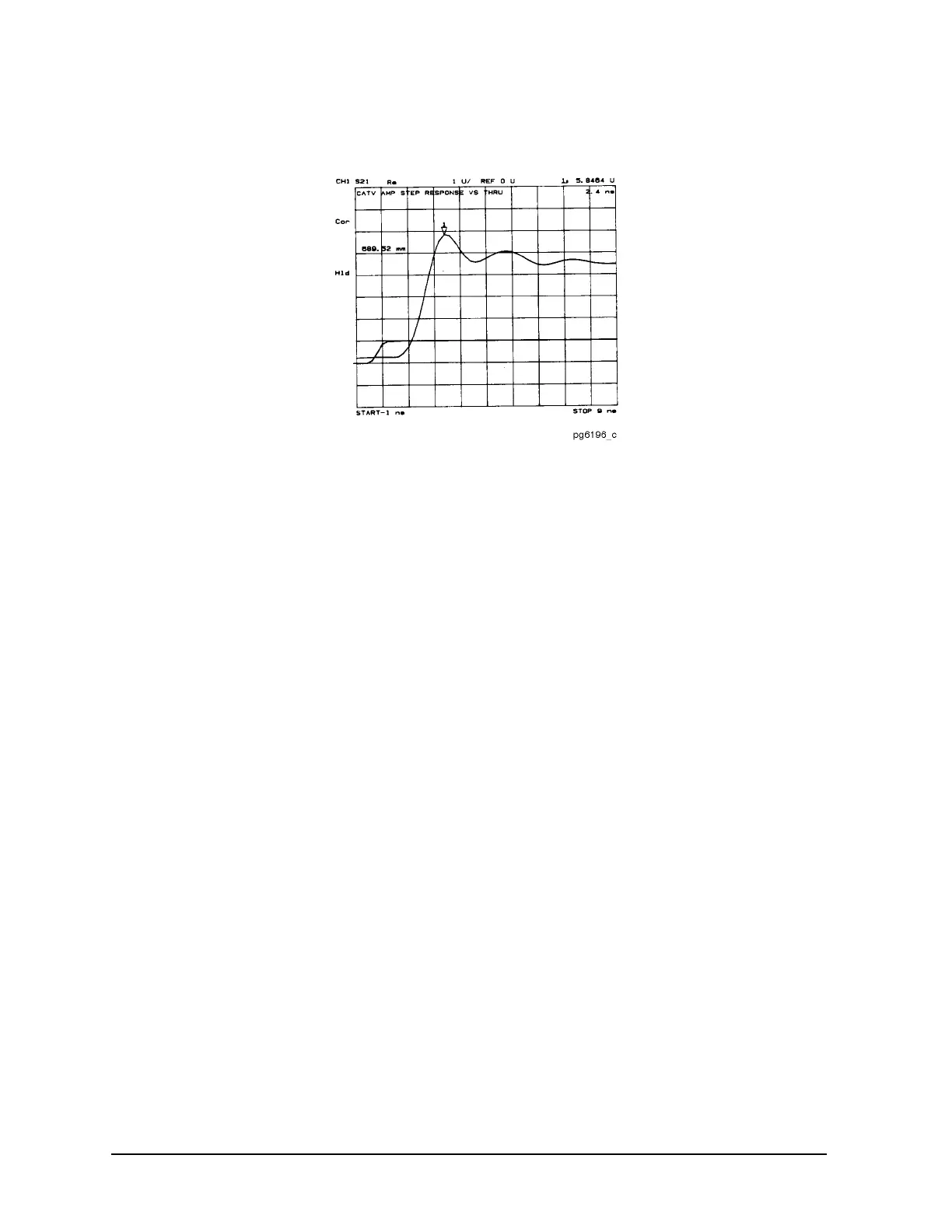3-20
Making Time Domain Measurements
Time Domain Low Pass Mode
Figure 3-15 Time Domain Low Pass Measurement of an Amplifier Small Signal Transient Response
Interpreting the Low Pass Step Transmission Response Horizontal Axis
The low pass transmission measurement horizontal axis displays the average transit time through the test
device over the frequency range used in the measurement. The response of the thru connection used in the
calibration is a step that reaches 50% unit height at approximately time = 0. The rise time is determined by
the highest frequency used in the frequency domain measurement. The step is a unit high step, which
indicates no loss for the thru calibration. When a device is inserted, the time axis indicates the propagation
delay or electrical length of the device. The markers read the electrical delay in both time and distance. The
distance can be scaled by an appropriate velocity factor as described in
"Time Domain Bandpass Mode" on
page 3-12.
Interpreting the Low Pass Step Transmission Response Vertical Axis
In the real format, the vertical axis displays the transmission response in real units (for example, volts). For
the amplifier example in
Figure 3-15, if the amplifier input is a step of 1 volt, the output, 2.4 nanoseconds
after the step (indicated by marker 1), is 5.84 volts.
In the log magnitude format, the amplifier gain is the steady state value displayed after the initial transients
die out.
Measuring Separate Transmission Paths through the Test Device Using Low Pass Impulse Mode
The low pass impulse mode can be used to identify different transmission paths through a test device that
has a response at frequencies down to dc (or at least has a predictable response, above the noise floor,
below 30 kHz).
For example, use the low pass impulse mode to measure the relative transmission times through a
multi-path device such as a power divider. Another example is to measure the pulse dispersion through a
broadband transmission line, such as a fiber optic cable. Both examples are illustrated in
Figure 3-16. The
horizontal and vertical axes can be interpreted as already described in "Time Domain Bandpass Mode" on
page 3-12.

